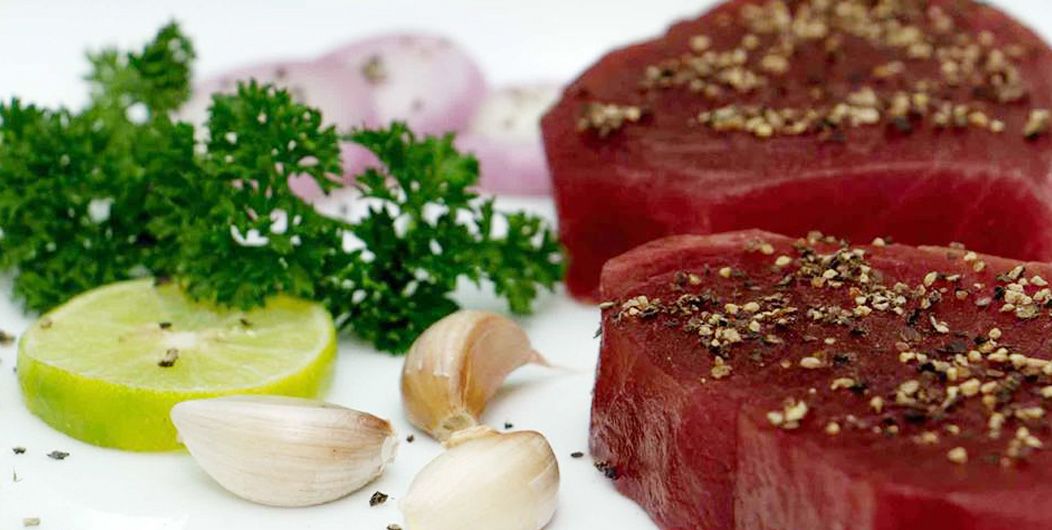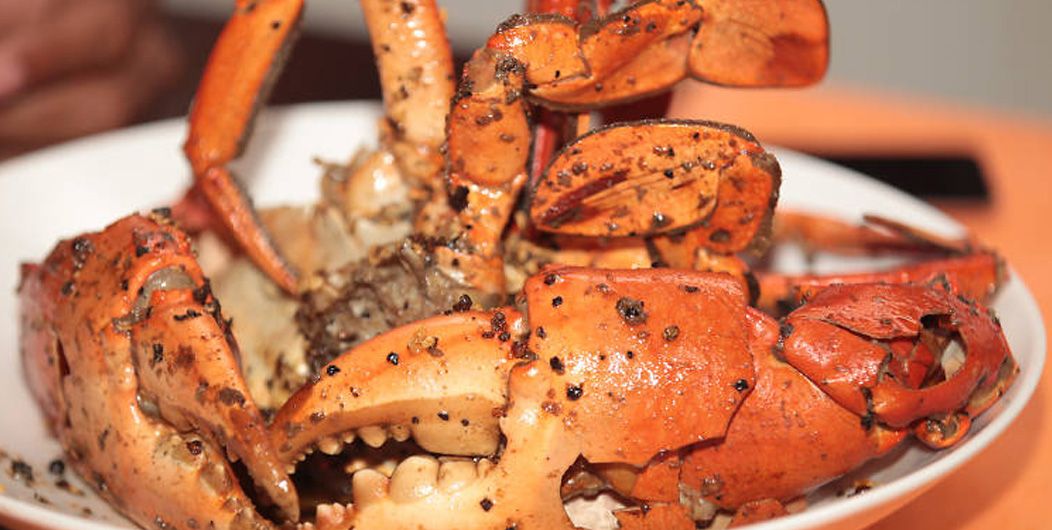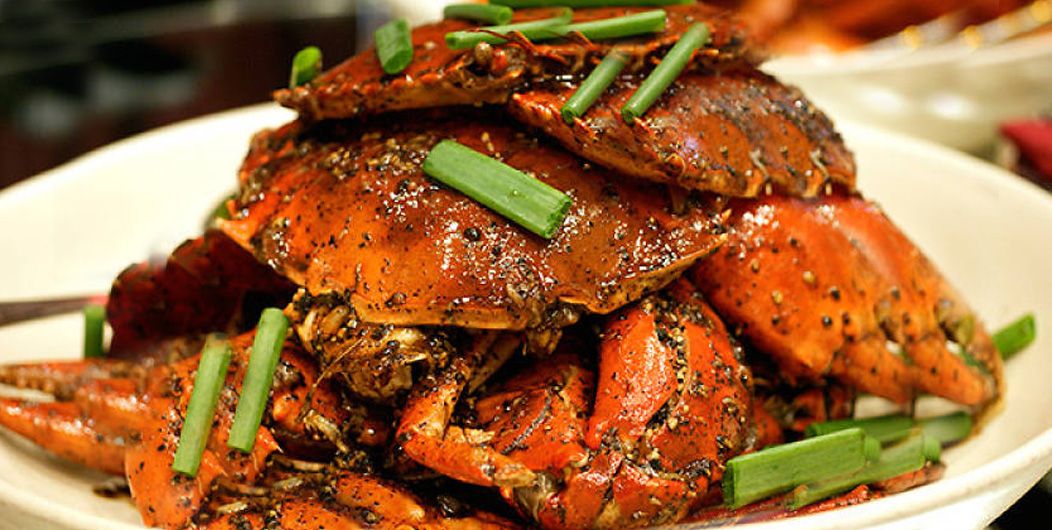
| Finfish | Lobster | Crab |
| Prawn | Molluscs | Sea Cucumber |
Sri Lanka has a long history of reliance on the sea for the nutritional and economic well-being of its people. The very location of Sri Lanka as an island in the Indian Ocean lends the country an advantageous position as a seafood sourcing destination, a privilege that’s exclusive to the islands.
Also, the numberless inland waters such as rivers, man-made tanks, lagoons, backwaters, and reservoirs whose water is mainly used for irrigating all kinds of crops, generating hydropower and for distributing for industrial and domestic consumption, also yield a significant harvest of inland fish and crustaceans that are used for both domestic consumption and export purposes.
On a side note, the fisheries sector of Sri Lanka consists of three main sub-sectors, namely, coastal; offshore and the deep sea; and inland and aquaculture.
According to the Seafood Exporters Association of Sri Lanka, Yellowfin tuna (Thunnus albacore) and bigeye tuna (Thunnus obesus) are the key varieties of finfish exported by seafood suppliers from Sri Lanka. Fresh tuna is an exclusive delicacy. Export grade tuna from Sri Lanka are hand-line, pole-line or long-line fished, gutted, gilled and chilled at sea. Incidentally, a longline is a deep-sea fishing line from which many short lines with baited hooks are suspended.
Locally known as Kelavalla, yellowfin tuna is one of the most popular fish in Sri Lanka, and it’s among the larger tuna species found in the Indian Ocean. There’s a considerable demand for yellowfin tuna for both exports and domestic consumption. The main export destinations for yellowfin tuna from Sri Lanka are the United States, France, Israel, Netherlands and Canada. While it can grow up to 150kg, the average weight of the catch could range between 25kg to 90kg. The largest yellowfin tuna ever caught to date is reported to have weighed 445 lb(approx.202kg).
It had been caught in December 2012 at Hurricane Bank, Mexico in the Pacific Ocean. Yellowfin tuna are so named because they sport a yellowfin on the upper side. It's mainly taken at deep-sea on long-range (multi-day) vessels through the long lines. Apart from its unique flavour, the main reason behind its enormous popularity, it's very nutritious seafood from Sri Lanka.
The Bigeye tuna is generally the size of yellowfin, but smaller than bluefin. It’s found in the subtropical and tropical areas of the Indian, Atlantic (but not in the Mediterranean), and Pacific Oceans. The largest Bigeye tuna can grow up to weigh more than 180kg (400 lb) The fresh and frozen Bigeye tuna is sold to foodservice operators as loins and steaks. France, Viet Nam, China, Thailand, Italy and the United States are the key export markets for the Bigeye tuna. The Bigeye tuna is highly popular in major restaurants worldwide. They are a good source of phosphorus, selenium, vitamin B6 and vitamin B12.
Sri Lankan tuna products are exported mainly fresh in open or vacuum packs.
Other finfish products include whole fish, loins (billfish only), steaks and fillets. Finfish is also exported alive (grouper only), fresh (in open or vacuum packs), frozen or canned.

Lobster, a delicacy that every seafood lover invariably longs for, is a crustacean exported also from Sri Lanka. Its meat is variously described as tender, sweet, and succulent. It’s rightfully the king of crustaceans, which amongst the cornucopia of seafood Sri Lanka is renowned for – fish, prawns, octopus, scallops, oysters, mussels and more, is considered the greatest delicacy.
The lobster species commonly found in Sri Lanka include:
Of these, the most sought-after is the Ornate Spiny Lobster, which is by far the priciest as well. A rich source of niacin, Vitamin B12 and zinc, lobsters only turn red when cooked and are usually blue-green when fished.
Lobsters are caught off the reefs at depths of 30-300 feet, by divers who will also use scuba equipment or aqualungs to reach their catch or place crayfish traps on the seabed. Lobsters are also caught in nets along with other fish and the companies get the fresh catch from the supplier, which is then taken to their collecting centres and placed in aerated tanks of seawater for a few days.
The burgeoning demand for lobsters has, however, raised grave concerns over the depleting stocks. Lobsters are exported to countries such as Hong Kong, China, Japan, Taiwan, Maldives and Singapore. Lobster fishing is also prohibited in February, September and October - the breeding season. There is a ban on catching egg-bearing and under-sized lobsters with the sizes being specified.
The lobsters are such a prized delicacy across the world that their appeal is universal constrained by no borders. Interestingly, some reckon lobster as an aphrodisiac as well. European folklore has it that the rich and creamy French classic lobster dish, Lobster Thermidor which is said to have been named by Emperor Napoleon after the month when he first tasted it (Thermidor was the 11th month in the Republican calendar after the French Revolution).
Source live and frozen lobsters from Sri Lanka >

Crabs are yet another prized delicacy among the seafood or the edible fish caught in and exported from Sri Lanka. The Blue Swimming Crab (Portunus pelagicus) makes up the bulk of the Sri Lankan crab exports basket, both in terms of volume and value. Mud crabs (Scylla serrata) are exported alive or as chilled fresh crab. Major crab products supplied by Sri Lanka include chilled and frozen fresh crab and pasteurized crab meat (canned).
Also called black crabs, mud crabs inhabit lagoons in dry zones. Sri Lanka has climatic factors along with partial wetlands conducive to mud crabs. Lagoons, mud, and water are the most preferred nature features for them whereas mangroves provide them with the ideal living space. The same species has been developed into a giant Mud Crab due to the diverse climatic and genetic factors. Known as the Green Crab or the Lagoon Crab, what Sri Lanka produces is a giant crab species related to the mud crab (Scylla Serata). It takes its name from the surroundings that turn it green.
The milky and delicious taste of the Sri Lankan Mud crab has earned it a global reputation; hence, it enjoys a high demand in the international markets. Sri Lanka lagoon crabs are also unique due to their sheer size. Mud crabs elsewhere in the world don’t grow as large. So, Sri Lanka makes an ideal sourcing hub for the largest and tastiest mud crabs in the world.
Also called Flower Crab, Blue Crab, Blue Manna Crab and Sand Crab, the Blue Swimmer Crab (Portunus pelagicus) is a species of crab caught in and exported from Sri Lanka. Blue Swimmer Crab occurs in the tidal estuaries of the Indian and western Pacific. Sri Lanka is one of its favourite habitats. A delicious food, the Blue Swimmer Crab meat contains vitamins A, B and C plus other nutrients such as potassium, zinc, selenium, manganese, sodium, and iron. It’s also considered good for cardiovascular diseases and known to promote skin rejuvenation and lower blood cholesterol levels. Sri Lanka is a good sourcing destination for blue swimmer crabs.

Prawns are yet another variety of seafood exported from Sri Lanka. The wild-caught and cultured giant tiger prawns (Penaeus monodoon) and the wild-caught Indian white prawns (Fenneropenaeus indicus) and banana prawns (Penaeus merguiensis) are the main varieties of prawns exported by Sri Lankan seafood companies. It’s exported in fresh or frozen form.
Sri Lanka exports both wild-caught and cultured giant tiger prawns. The giant tiger prawn owes its name to the stripes that cover its shell. This species is a highly valuable seafood species, is targeted widely by commercial fishers, and is cultivated in aquaculture farms in Sri Lanka and elsewhere in the world. Along with true crabs, lobsters, and other prawns, the tiger prawn is a decapod; it has ten legs, and it is covered with a spiny exoskeleton that provides it with some protection from potential predators. Sri Lanka is a good sourcing destination for giant tiger prawns.
Yet another species of prawns harvested in and exported from Sri Lanka is Indian white prawns. An adult Indian white prawn can grow up to a length of about 22cm (9 in) and they inhabit the seabed to depths of about 90m (300ft.) They’re wild-caught in Sri Lanka but are raised in aquaculture farms elsewhere in the world.
The name 'banana prawn' refers to two species – white and red-legged banana prawns; both species live in tropical waters and are short-lived and fast-growing. They’re wild-caught in Sri Lanka.
Vannamei shrimp, a high-yield shrimp variety, also known as pacific white or white leg shrimp, was introduced to Sri Lanka in 2018 and is being successfully cultivated and harvested now in Sri Lanka. Vannamei shrimp is in higher demand globally. In the European Union, the Vannamei shrimp imports are around 85 per cent, with the rest being black tiger.
Vannamei shrimp costs less to farm and is more disease resistant, compared to the black tiger prawn variety Sri Lanka had farmed in its past. Sri Lanka in 2019 produced 5,000 metric tonnes of vannamei, of which 2,000 metric tonnes were exported, generating an estimated US $5 million.
Although the names ‘prawn’ and ‘shrimp’ are interchangeably used now and then especially by the generalists, they're two biologically and anatomically different crustaceans that look almost similar and taste almost similar as a cuisine. Following are the main categories of shrimp exported from Sri Lanka.
Molluscs are also a valuable category of seafood exported from Sri Lanka. The molluscs harvested in and exported from Sri Lanka mainly include the following:
Molluscs are exported in shell and in other forms such as smoked, frozen, dried, salted or in brine.
Sea cucumbers are marine animals with leathery skin and elongated bodies. They are a popular delicacy across Asia. In Sri Lanka, the sea cucumber fishery is largely export-oriented and is currently confined to the Northern arc. Out of 24 sea cucumber species so far identified in the Sri Lankan waters, 20 species have some commercial value.
Sri Lanka’s seafood product sector has emerged as a quality exporter of a wide variety of fish, with the most popular of them being tuna. Sri Lanka’s rich and relished seafood of different varieties are available through an extensive network of exporters.